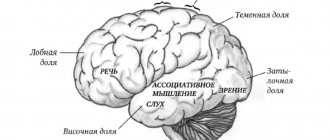The famous Coco Chanel said: “You never get a second chance to make a first impression.” Undoubtedly, this brilliant woman was right. In the first 30 seconds, the unconscious reads basic information and creates the first impression of a person. Everything else will be superimposed on this foundation of the first impression. The first information received goes into the “box” of long-term memory, and the rest goes into short-term memory.
Photo by cottonbro: Pexels
Therefore, some information about a person is forgotten, you cannot accurately remember the details of the conversation. But the first meeting and the first phrases can remain in memory for a very long time. This mechanism complicates matters when the first impression of a person is falsely positive.
Your friends then wonder how you tolerate his behavior and antics, how can you not see what kind of person he is?! And I remember that bright first date, when he was polite, handsome and gallant as ever. Indeed, he was never really like that. But he knows how to make an impression. Someone does this consciously, understanding the words of Coco Chanel and using this chance.
In this article:
Brain trapsExampleNovelty effectTwo oppositesHalo effect
Interpersonal perception
Interpersonal perception. (interpersonal perception) The impressions we form about other people serve as an important basis for interpersonal interactions. People's perceptions. - Is a complex and distinctly different object from the perception of space. In this case, the attention of the human observer is directed to the internal psychological processes of the human stimulus. These processes are practically undetectable by sensory mechanisms; information about them is obtained through inferences or attributions made by the observer. In this sense, "human perception" is not a good name, and the process might better be called "inferences about people." Most of the topic M.V. is now covered by attribution theory. Fritz Heider pointed out 3 differences in the perception of physical objects and people. First, people are believed to have an inner life, as opposed to physical objects. Every person has thoughts and experiences emotions, believing that others are no different from him in this regard. Second, physical objects are not perceived as the cause of their own actions, whereas people are often seen as the primary causes of their actions. The concept of responsibility is closely related to the idea that people are guided in their actions by their own internal considerations, and not simply subject to the inexorable demands of their environment. Third, humans can deliberately manipulate and exploit observers, but inanimate objects cannot. One of the purposes of human perception is to enable a human observer to predict the likely actions of a human stimulus in order to take them into account when planning his own actions. The study of human perception is essentially an attempt to reconstruct the way the average person on the street processes information about other people and about themselves. Such an observer is interested in answering the question of why a given human stimulus acts or behaves the way it does. According to Haider, the causes of behavior are usually attributed either to the environment or to the actor himself.
When an action can be attributed to environmental causes, the subject is not held responsible for the positive or negative consequences of his behavior, but when individual internal factors are perceived as the sources of behavior, the subject in question is fully responsible for those consequences. Much of the work on attribution research has focused on the rules that observers use when attributing the causes of behavior to the environment or to the actor himself. Heider believed that the interpersonal function of human perception is to enable the observer to predict and control the behavior of other people. The tendency of observers is to accept the first suitable cause as the basis of behavior. However, if there are other probable reasons, the influence of a particular reason on achieving the effect is devalued. This principle of devaluation can lead to the attribution of both environmental and personal reasons for observed behavior. Moreover, the more effects associated with an agent's behavior, the more plausible the reasons may be. G. Kelly, who proposed this discounting principle, supplemented it with the augmentation principle. The more a person risks spending to act as he does, the more likely it is that the observer attributes his behavior to internal, personal reasons. In general, the more an observer believes that an actor's behavior differs from the behavior of most other people in a similar situation, the more that behavior will be attributed to something unique (or is attributed) to that actor. The observer may see the actor's behavior only once, or he may have unlimited opportunities to observe it. Most attribution rules can be based on either a single observation or multiple observations.
The first case includes the following. Behavior out of role. Extra-role behavior can be interpreted as a derivative of the principle of reinforcement. A person who violates role boundaries thereby gives up habitual rewards and appears willing to accept further negative reactions from others. Thus, in doing so, he must be guided by certain personal considerations. Non-general effects (popsottop effects). An observer can mentally reconstruct another person's decision-making process to understand the reason for their choice. It can be assumed that the chosen alternative is preferred because it maximizes some value for that person, at least relative to other alternatives, i.e. The basis of a decision is some effect that is not common to the possible decision alternatives, and this effect allows us to learn something about the person making the decision. Hedonic meaning. If another person's behavior has a certain positive or negative effect on the observer, then the observer will be more inclined to attribute that behavior to personal reasons. Personalism. When an observer experiences positive or negative effects of an actor's behavior, the observer may wonder whether these effects were specifically intended for the observer. If the observer believes that the behavior in question was directed at him (personally) or against him (her), then he is more confident in making personal attributions. G. Kelly also provided his model with a set of rules that naive observers can use to guide their selection of attributes as a result of multiple observations of an actor. If the observer does not have a preconceived cause-and-effect framework upon which certain behaviors are analyzed, reasons given, and graded according to proficiency, he will apply a rational process for processing the available data, similar to that used by researchers. According to Kelly, the following principles allow an observer to attribute the causes of behavior to the actor, the environment, or both.
Subsequence. A consistent response indicates a stable environmental cause, while an inconsistent response indicates fluctuations in personal factors. Vagueness. In general, the more differentiated the response is across different objects, the more likely the observer is to attribute it to environmental factors, and the less differentiated the response, the more likely it is to be a personal attribution. Consistency (consensus). If the majority of people react to a situation in the same way, then this makes it easier to assign environmental status. But if a particular person reacts differently than most people, then personal attribution is more likely. There is a tendency to distinguish between the attributes of the agent and the observer. Actors tend to view their own actions as forced, arising under strong pressure from external circumstances. On the contrary, as Heider writes, the actor's behavior tends to fill the observer's field of perception. This actor-orientation, by relegating the role of the environment to the background, leads observers to rely more often on personal attributes than on the actor, which has been called the fundamental attribution error. Moreover, subjects naturally have more information about themselves and a broader context in which to make attributions than observers. I. Jones and C. Davis argues that once an observer makes an attribution of personal causes, a correlational inference is made from the observed behavior and an inference is made about the motive underlying the behavior. The observer will note environmental influences and observe possible correlations with behavior.
If behavior is associated with environmental factors, then information processing stops. However, in the case of personal attribution, the researcher may assume that the actor intends to produce the observed effects. Intention implies that the actor is aware of possible consequences in advance and is able to cause them. Intention does not refer to observed behavior, but to its consequences (outcomes and consequences). When an intention is attributed to an actor, the motive behind that intention is sought. Correlational inference assumes a commonality between the type of response and the motive attributed to it. According to this theory, an observer's attribution of the causes of behavior is always followed by a subsequent correlational inference. It is further assumed that recognition and labeling of responses is an unproblematic and natural mechanism, similar in many ways to the action of proximal forces of the perceptual field. It is argued that action cannot be identified separately from the goals by which the subject is supposed to be guided. It is clear that observers form complex (summative) impressions of others. Sources of information include direct observations and reports from other observers. Some types of information play a more important role in the formation of such summative impressions, while others are more peripheral or insignificant. Norman Anderson has proposed mathematical models of how observers process and weigh information about actors provided to them (in adjectival form). For example, how much more weight might be given to certain characteristics over others when judging a person's likability, or how much more weight might be given to early information compared to later information.
Method of application
Such a phenomenon as the novelty effect is inherent to all people to one degree or another. Perhaps only grumpy old people can rely solely on initial impressions, and then, most likely, they will do it out of spite, deep down understanding what has changed and accepting it. For this effect to work in your favor, you need to learn how to correctly implement it into your life. This can be done in all areas, the main thing is to catch the “wave” and feel how you yourself and your society react to changes. Let's look at exactly which areas this phenomenon can take root.
Effects of Interpersonal Perception
Causal attribution. People who get to know each other do not limit themselves to obtaining information through observation. They try to find out the reasons for the behavior of communication partners and determine their personal characteristics. However, since the information about a person obtained as a result of observation is usually insufficient to make reliable conclusions, the observer begins to attribute probabilistic reasons for the behavior and personal characteristics of the communication partner. Such a cause-and-effect interpretation of the behavior of the observed person can have a significant impact on the observer himself.
Thus, causal attribution is the subject’s interpretation of interpersonal ideas about the causes and motives of other people’s behavior. The word "causal" means "cause and effect." Attribution is the attribution of properties to social objects that are not present in the sphere of perception.
From studies of problems associated with causal attribution, researchers have concluded that attributional processes constitute the core of interpersonal perception. It is noteworthy that some people tend to focus more on physical characteristics in the process of interpersonal perception (in this case, the area of “attribution” is significantly reduced), while others perceive predominantly the psychological traits of others. In the latter case, wide opportunities for attribution open up.
A certain dependence of “attribution” on attitude in the process of human perception has been revealed. This role of attribution, as noted by G.M. Andreeva, is especially important when forming the first impression of a stranger. This was shown in the experiments of A. A. Bodalev. Thus, two groups of students were shown a photograph of the same person. The first group was told that the man in the photograph was a hardened criminal, and the second group was told about the same man that he was a famous scientist. Each group was then asked to create a verbal portrait of that person. In the first case, the corresponding characteristics were recorded: deep eyes indicated hidden evil intent, a prominent chin indicated determination to “go all the way to committing a crime,” etc. Accordingly, in the second group the same deep eyes indicated deep thinking, and a prominent chin indicated willpower in overcoming difficulties in perception, etc.
Such studies are designed to answer the question of what role the characteristics inherent in communication partners play in the process of interpersonal cognition, and to what extent attitudes towards them influence these characteristics.
The “halo effect” is also known as the “halo effect.” The halo, as we know, is a luminous circle depicted around the head of God, his apostles or simply saints and martyrs. Usually in modern mass communication, the term "halo effect" refers to that "blue glow" that characterizes television screens and which is transmitted, as it were, to the television personalities most often superimposed on them. In traditional social psychology, "halo" refers to the spread of the authority and popularity of a particular leader or generalized symbol among his most trusted followers and supporters.
It is well known from everyday life that a person who is outwardly recognizable by his frequent appearances on the television screen is inevitably perceived by ordinary people as a “boss” or a “star.” Even with considerable effort, it is simply impossible to change the opinion of the average audience. The reason for this perception is that mass communication is truly mass, not only in a purely quantitative sense, but also in a qualitative sense. The halo effect manifests itself as either a positive evaluative bias (positive halo) or a negative evaluative bias (negative halo).
Thus, if the first impression of a person is generally favorable, then in the future all his behavior, characteristics and actions are overestimated in a positive direction. They emphasize and exaggerate only the positive aspects, while the negative ones are underestimated or ignored. If the first impression of a person is negative, then his positive qualities and actions are subsequently either not noticed at all or are underestimated against the backdrop of hypertrophied attention to his shortcomings.
Decoding
The novelty effect in psychology is a certain phenomenon that involves increasing the significance of the information that was received last. At the same time, everything that you knew before is, as it were, forgotten or a priori considered unimportant. As we can see, the effect of primacy and novelty are two opposing concepts. But it is worth remembering that both can be inherent in the same person. It’s just that in someone’s subconscious the effect of novelty is more developed. This is typical mainly for those people who prefer to keep up with the times, are not afraid of change, travel, and are always open to new acquaintances. But the primacy effect most often prevails over conservative individuals who like to delve into the past and live in memories.
The term "novelty effect" in psychology
The novelty effect is a socio-psychological phenomenon that occurs in human perception of a person. In the case of a familiar person, the last information received about him is the most memorable, and in the case of a stranger, the first impression about him is the most significant.
The area of social perception, related to the description of phenomena, effects and manifestations, is the most studied and has rich factual material. Phenomena and effects are both peculiar “errors” and important patterns associated with the characteristics of the psyche.
The effect of novelty makes life happier and richer. The effect of novelty is closely related to the effect of halo and primordiality and is expressed in the importance of information of a certain order about a person for the formation of his image. As for a familiar person, the latest new information about him will be significant - this is the novelty effect. As for a stranger, the first information about him will be significant - this is the effect of novelty.
Both effects are considered special cases of the manifestation of a process, the perception of a person by a person - this process is called stereotypes.
This “false” psychology explains it simply and clearly, but the difficulty lies in putting these principles into practice.
Psychologists suggest that previous knowledge is transferred to long-term memory, while new knowledge remains in short-term memory and is not perceived by consciousness as a reliable fact. The second reason for this effect, in their opinion, is the unconscious prioritization of information intermediaries. It is generally assumed that if the first source satisfies a person's needs, it will be more attractive and reliable.
The law of seniority, discovered by the American psychologist M. Lundt in 1925, coincides with the novelty effect - this concept existed before the formal formulation of the novelty effect. This feature of perception is associated in modern psychology with the work of the Polish-American psychologist Solomon Ash.
S. In his article in 1946, Asch first noted the primordial effect. He analyzed his experiment and theorized that the first message about something makes a stronger impression on a person.
The novelty effect was criticized by the founder of the Yale school, K. Hovland, who believed that the theory does not take into account the level of education of the audience, its worldview, and attitude.
The novelty effect is contrasted with the primary effect. It is defined as the tendency of an individual to reject previous information about a person and attach greater importance to new data.
To test these effects, N. Miller and D. Campbell conducted an experiment in 1959. The point of the experiment was to see what would happen to their view of the process. They were given a transcript of the trial, which outlined the arguments of the prosecution and defense in separate blocks. Depending on which block they read first, their opinion about the guilt or innocence of the defendant changes.
Based on this, the researchers concluded that the novelty effect cancels the primary effect only when:
- A large amount of time passes between two news stories with conflicting information;
- The audience must form an opinion immediately after receiving new information.
Getting ready for the exam!
Often the primacy effect occurs at those moments when we need to remember a large amount of information. Most often this happens before taking exams, when you have to read, write and study a lot. If your brain works exactly according to this pattern - it remembers all the very first things, then you can take advantage of it. Study the most important things first, and leave the less important ones for later. The second useful thing to learn from this type of thinking is the use of synonyms. You will perfectly remember the first ticket that you have learned, and when in the next ones you come across the same words or numbers that were in the first one, you will automatically remember this information.
But we draw your attention to the fact that if there is too much information, the primacy effect can be suppressed, and the only thing you can remember is the last phrases you learned.
Getting a first impression of a person
A person's daily life is full of new encounters, and in many situations a person has to be assessed on the basis of short-term perceptions - these are first impressions, and on their basis, appropriate behavior is formed.
The first impression is a complex psychological phenomenon that includes logical, emotional and sensory components. The first impression can be formed both with a specific intention to evaluate a person, and in the absence of such intention.
The decisive factors for your impression of a person you meet for the first time are the characteristics of his appearance and behavior. The person himself, his behavior and appearance are very clearly reflected at the first meeting.
The situation in which the meeting took place also has a significant impact on the formation of an impression of a stranger.
The impression also depends on the personal characteristics of the person who judges the stranger, his mental structure and attitude towards various aspects of reality.
These factors are global and closely interrelated.
Research conducted by psychologists suggests that when forming an opinion about the personal qualities of a person you meet for the first time, his overall aesthetic expression is of great importance. For example, the extent to which a person's appearance corresponds to the established ideal of beauty.
Using the competent judges method, A. Miller conducted an experiment in which he selected beautiful faces from the judges' point of view and ordinary faces from a large number of photographs. Two groups of photographs were shown to women and men aged 18 to 24 years. The subjects' task was to tell something about the inner world of each person based on photographs.
Photos with more beautiful faces were described as confident, sincere, happy, mentally rich people. The evaluation of the second group of photographs showed significant discrepancies with the first group.
This research suggests that physical attractiveness causes a “shift” in personality when the goal is a personality trait and when a specific outcome of an activity or behavior is valued.
Pleasure
That very feeling when you have experienced something new and are now wildly happy about it cannot be compared with anything. This applies to extreme sports, travel, and even stage performances. Well, sometimes a new pair of shoes gives you a feeling of unearthly happiness. But we are no less delighted by those things that were nice a long time ago, and now for some reason forgotten. We remember, repeat and become happier again. It is precisely in such cases that the effect of novelty and primacy in psychology go hand in hand. When you discover something fundamentally new, you enjoy it as it is your first time. And remembering past pleasures, you are given that very effect of primacy, also causing positive emotions in yourself.
Bring back logical thinking with a trading journal
The novelty effect is when a trader makes trading decisions based on emotion rather than logic.
When the mind is under the influence of emotions, it is difficult to switch back to logical thinking.
Using a trading journal can help force the mind to think logically as a trading journal presents facts and data. Let's assume that a trader always records his trading activity; then, if he looks at the results of past transactions, he gets information from facts, not from emotions.
This data cannot be argued with, so reading previous results that demonstrate the profitability of the system will return the mind to thinking logically.
Ebbinghaus Research
The edge effect was first discovered by one of the founders of experimental psychology, German psychologist Hermann Ebbinghaus. It was he who first drew attention to the fact that a person remembers better information that is located not in the middle of the information series, but at its beginning or end.
The starting point and evidence base for confirming his theory were syllables that did not make sense. These were simply speech elements consisting of 2 consonants and one vowel. Ebbinghaus compiled about 2,300 such unrelated syllables and conducted an experiment on learning and remembering such a series on himself.
During the experiment, the psychologist discovered that repeated repetitions ultimately led to the same result - the syllables at the beginning and at the end of the row were remembered better than the syllables in the middle.
This effect persisted both during immediate reproduction of the material and during its delayed restoration in memory. Subsequently, this experiment, proving the existence of the edge effect, became part of the theory of memory.
Favorite work
In this area, a person, using a similar property of his own psyche, can also influence both himself and his own superiors. In modern business, as we know, predominantly progressive individuals work who are not accustomed to dwelling on their first impressions. They always actively monitor new products, including your latest actions and deeds. Let’s say that previously you were a “gray mouse” in terms of work, that is, you did not take it too seriously, you could afford to leave earlier, and you were not worried about the success of the campaign. But recently enthusiasm has begun to appear, acumen and passion have appeared. The effect of novelty worked in the subconscious of the boss - he saw your renewed personality. This became the reason for career growth and increased status. If you work for yourself, then each new success will stimulate you to do more and make you think better and better about yourself.
Switching
Switching is constantly changing trading strategies without any real reason for it. This usually happens either after a series of losing trades, or after the account equity changes to negative.
The most recent losing trades made are convincing enough to make a trader believe that his strategy is no longer viable, even though it is generally profitable.
When this happens, the trader changes strategy. When a similar drawdown occurs with a new strategy, he changes it again, and so on.
The trader believes that he is successfully avoiding a series of losing trades because he stops trading the strategy when it becomes unprofitable. In reality, systems do not have profitable periods, since each of them never completely goes through a drawdown and does not begin to make a profit; As a result, the presence of only losing series of trades affects the trading account.
If a strategy has been tested and there is evidence that it is a winner, then the right thing to do is to trade it during the drawdown period. However, poor trading results will be a recent event, and instead of following a logical plan, traders will try to avoid losing trades by switching from a winning system to another.









